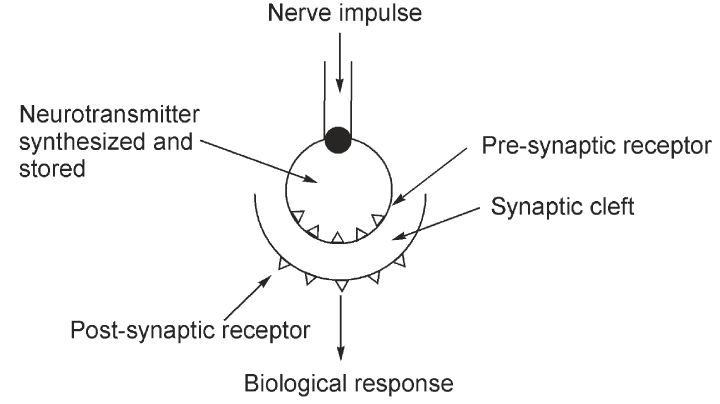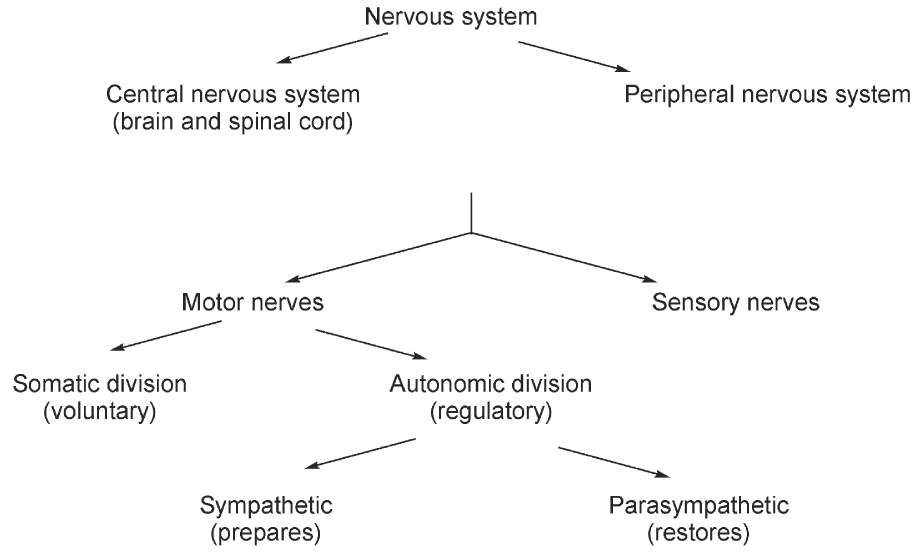
THE NERVOUS SYSTEM
 المؤلف:
James R Hanson
المؤلف:
James R Hanson
 المصدر:
Chemistry and Medicines
المصدر:
Chemistry and Medicines
 الجزء والصفحة:
p 42
الجزء والصفحة:
p 42
 4-10-2017
4-10-2017
 2512
2512
THE NERVOUS SYSTEM
The nervous system has two major divisions: the central nervous system (CNS) comprising the brain and spinal cord, and the peripheral nervous system that lies outside this (see Scheme 2).

Scheme 1 Schematic diagram of a nerve ending

Scheme 2 Divisions of the nervous system
The peripheral nervous system can be divided into the motor (functional) and sensory nerves.
The motor nerves are further sub-divided into the autonomic and somatic nerves. The autonomic nerves regulate the everyday needs ofthe body such as heart function and gastrointestinal motility, without the conscious participation of the brain. The somatic or voluntary system regulates functions such as muscular and skeletal movements under the conscious control of the brain (see Scheme 2).
The autonomic system is further sub-divided into the sympathetic nervous system, which has the role of preparing the muscle for action, for example, to increase heart rate, while the parasympathetic system has the role of restoring the system to a steady state – for example, decreasing heart rate.
The autonomic system has two sections, which are joined by ganglia or a grouping of nerve cells. Transmission of information from the preganglionic to the post-ganglionic section is mediated by a neurotransmitter. The post-ganglionic neuron also uses a second neurotransmitter at the nerve ending. A neurotransmitter is released and crosses the narrow synaptic cleft to bind to a receptor. This binding to the receptor then brings about the effect of the nerve impulse. The voluntary or somatic nervous system differs from the autonomic nervous system by taking the information directly from the CNS to skeletal muscle without the intervention of ganglia.
 الاكثر قراءة في الكيمياء الطبية والدوائية
الاكثر قراءة في الكيمياء الطبية والدوائية
 اخر الاخبار
اخر الاخبار
اخبار العتبة العباسية المقدسة


